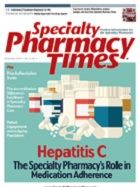Publication
Article
Specialty Pharmacy Times
Looking Back and Moving Forward
Author(s):
As we prepare to turn the page on a year that epitomized this transitional era of health care, we must look back at 2014 to see what lies ahead in 2015 for specialty pharmacy.
The past year was undoubtedly the year of hepatitis C treatment advancements, as the specialty landscape was dominated by newly FDA-approved therapies, including Sovaldi, Harvoni, and Olysio, which bring cure rates in the range of 90%. In this issue of Specialty Pharmacy Times, we take a look at the role that specialty pharmacy will play in ensuring the value of these high-cost medications.
Sovaldi, for example, has achieved cure rates of up to 95% while carrying a $1000-per-pill price tag. A recent study conducted by CVS in the first evaluation of Sovaldi’s use outside of the clinical trial setting showed a therapy discontinuation rate 4 times higher than in the trials.
As a result, it is imperative that extensive follow-up care, such as the services provided by pharmacies that specialize in hepatitis C, be conducted to ensure that patients complete their course of therapy in order to achieve the maximum benefit.
With the cost of a typical round of treatment with Sovaldi coming in at $84,000, the drug has ignited a larger national debate regarding the escalating cost of specialty drugs and the ability of the system to continue paying for them. Nestled within this debate is the ultimate question of who will decide which patients receive these drugs, as stakeholders weigh the immediate cost of the newer drugs against the long-term costs of chronic hepatitis C and related liver problems.
Some say that managing the cost of these medications represents a significant challenge. Where some see challenges, I see opportunities.
The opportunity offered by these medications is the realistic goal of eradicating hepatitis C in the not-so-distant future. Specialty pharmacy can play a specific role in ensuring the value of these high-cost drugs in achieving the goals set forth by payers and providers and in helping patients achieve favorable outcomes.
It boils down to the dual obligations of pharmacists: an obligation to the patient to maximize their treatment outcome and an obligation to the payer to make sure that patients use drugs appropriately.
As we move forward into 2015, the industry must continue to demonstrate the value of these high-cost drugs, throughout the coming year and beyond. As we take that step together, we would like to wish you and your family a healthy, prosperous, and very happy New Year. SPT
Thank you for reading!
Mike HennessyChairman and CEO







